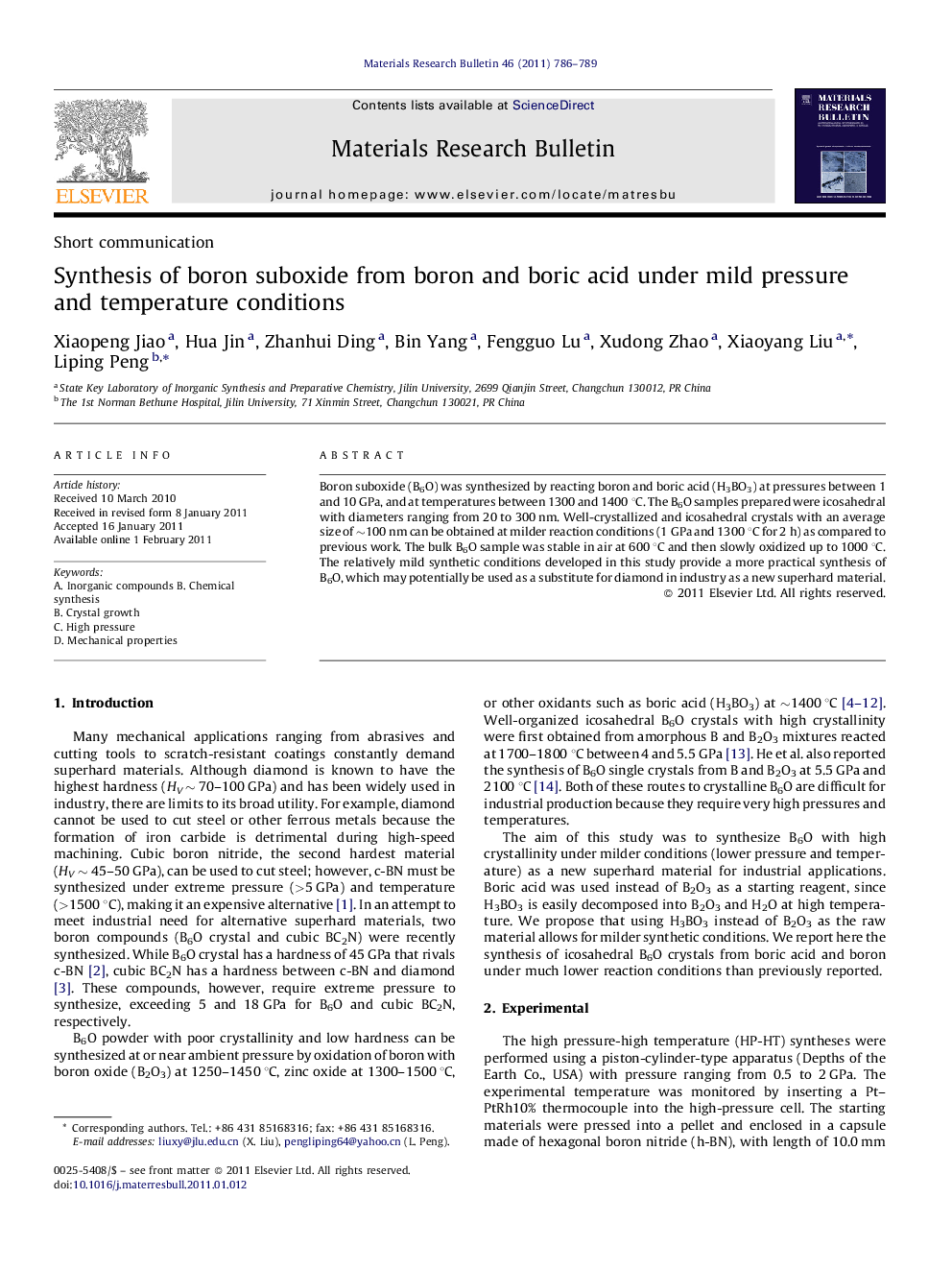| Article ID | Journal | Published Year | Pages | File Type |
|---|---|---|---|---|
| 1490773 | Materials Research Bulletin | 2011 | 4 Pages |
Boron suboxide (B6O) was synthesized by reacting boron and boric acid (H3BO3) at pressures between 1 and 10 GPa, and at temperatures between 1300 and 1400 °C. The B6O samples prepared were icosahedral with diameters ranging from 20 to 300 nm. Well-crystallized and icosahedral crystals with an average size of ∼100 nm can be obtained at milder reaction conditions (1 GPa and 1300 °C for 2 h) as compared to previous work. The bulk B6O sample was stable in air at 600 °C and then slowly oxidized up to 1000 °C. The relatively mild synthetic conditions developed in this study provide a more practical synthesis of B6O, which may potentially be used as a substitute for diamond in industry as a new superhard material.
Graphical abstractWell-crystallized and icosahedral B6O crystals were prepared by reacting boron and boric acid at milder reaction conditions (1 GPa and 1300 °C for 2 h) as compared to previous work..Figure optionsDownload full-size imageDownload as PowerPoint slideResearch highlights► Well-crystallized icosahedral B6O was synthesized by reacting boric acid and boron. ► The synthesis conditions (1 GPa and 1300 °C for 2 h) are milder in comparison with previous work. ► The more practical synthesis method may make B6O as a potential substitute for diamond in industry.
